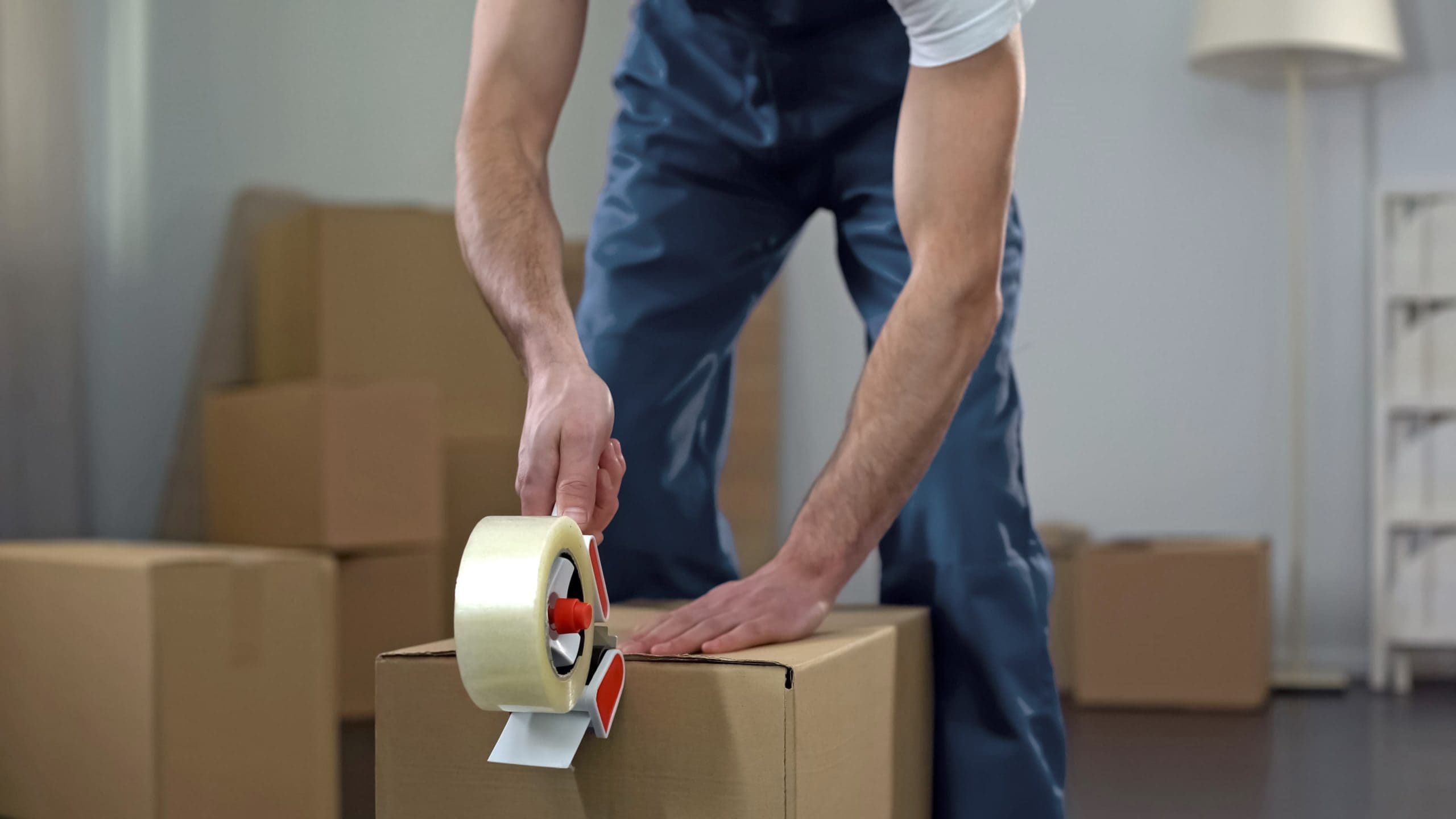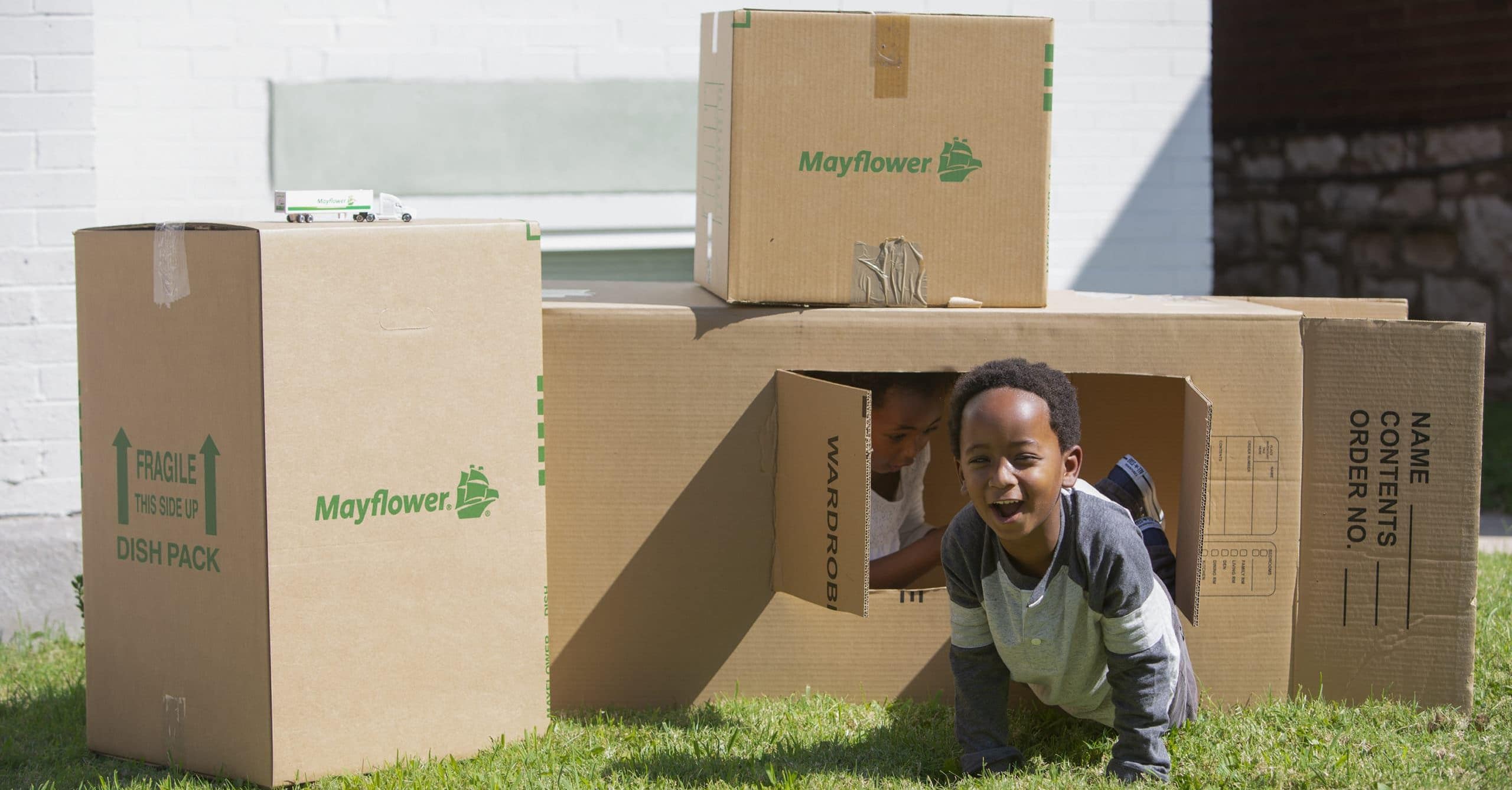If you’re a weekend boating or sailing enthusiast, your vessel is something you’ll likely want to take along with you. But moving your boat securely over a long distance will take some prep and planning to make sure it’s shipshape upon arrival.
Small, easily portable craft such as a kayak or canoe can usually ride along in the moving van. For this blog, we’ll focus on moving trailer-able vessels that fall within a particular set of parameters. Use this checklist as a guideline for a self-move scenario.
The Boat You’re Planning to Move
- Is approximately 22 feet or less
- Has a beam width of 8’ 6″ or less
- Is less than 12 ½ feet tall when on the trailer
- Has a trailer and hitch rated to safely tow the boat based on weight and dimensions
- Has a centerboard, dagger board or an outboard motor versus a keel or inboard engine
- Has an easily steppable (removable) mast if it’s a sailboat
- Has been regularly towed by you or the designated driver before
- Has an up-to-date license and plates on the trailer
If you’re planning to move a larger boat, reach out to an experienced mover like Mayflower for assistance.
1. Plan Your Route
It’s no surprise that the longer and wider your boat is, the trickier it will be to haul. Add in some winding stretches or mountains, and it soon becomes clear that you can’t always just take the route with the shortest distance. Things you’ll want to consider include the terrain on which you will be hauling, the tow vehicle weight, the trailer weight and the stops (rest and otherwise) you plan on making during your journey.
Keep in mind that towing any heavy load affects a vehicle’s acceleration, braking distance and maneuverability. No matter what route you decide upon, braking, reversing, parking and navigating underneath overpasses and power lines are skills you and any other designated drivers will need to master. The more you practice these maneuvers beforehand, the better.
2. Determine the GCVW
Knowing the gross combined vehicle weight rating (GCVR), in other words, the total weight of the boat, trailer and the vehicle hauling them, is key to ensuring a safe journey.
Your vehicle’s approximate weight can usually be found in the owner’s manual. The best way to determine trailer weight is to take the boat and trailer to a scale at a truck stop. Be sure to weigh your trailer when it’s off the vehicle hitch, it has all the gear you want to keep aboard, and if applicable, when the boat’s fuel tank is full.
Also, be sure to check the info on the trailer’s Vehicle Identification Number (VIN) sticker to make sure that the axles and tires on your trailer are capable of carrying the load.
3. Prep Your Vehicle
This is the perfect time to give your vehicle a thorough once-over —or, even better, a tune-up. Make sure the tires are in good shape and that your brakes, headlights, wipers and turn signals are in working order.
Double-check that your vehicle can tow your boat over a long distance. Your vehicle’s owner’s manual will have a chart showing the maximum trailer weight your vehicle can tow, but don’t forget to consider the weight of spare tires, tools, outboard engines and other things you want to bring. As a rule, you don’t want to exceed 80% of the vehicle’s maximum towing weight.
4. Batten Down the Hatches
Carefully securing your boat to the trailer is a must, especially for any long-distance haul. Some weekend warriors make do with their own ad hoc combination of shock cords, straps and cushions even if it’s not best; however, securing a boat for a longer journey requires a certain degree of planning and attention to ensure that the boat rides without swaying, jostling or — in the worst-case scenario— falling off.
There are three points where a boat should be tied down: The stern on both sides of the boat and at the point of the bow. Use ratchet straps — not rope — to snugly attach your boat to the trailer. Cut up pieces of old foam or, alternately, use rubber mats to pad between the boat and strap to protect the vessel’s finish.
And one last thing: If your cockpit is uncovered, be sure the drain plug at the bottom of the boat is open and free of any debris.
5. Check the Trailer’s Electrical System
If your boat has been stored for a long time in your yard or at a boat storage area, chances are the electrical system will need some attention before you embark. Start out by determining whether the plug-in connection between your vehicle and the trailer is in good condition. If necessary, repair or replace it. Next, have someone stationed at the back of your trailer to check that the brake lights and turn signals function properly and walk around the entire trailer to see if any reflectors or reflecting tape need replacing.
One thing that’s often overlooked is the small light on your trailer’s license plate: — it needs to work, both for safety reasons and to avoid getting a ticket.
6. Don’t Forget the Brakes and Tires
For a smaller boat, your vehicle’s brakes should be adequate. However, if the total weight of your boat and trailer exceeds 3000 pounds, your trailer will need its own brake system. Any trailer so equipped will also have breakaway brakes that will automatically activate and bring it to a stop if the trailer becomes disconnected from your vehicle.
Remember to check the condition of your trailer tires —especially if the trailer’s been sitting in one place for an extended period of time. In addition to making sure the tires are in good shape and at the recommended pressure, check that your spare tire/wheel is ready, and that all wheels turn freely without any friction.
7. Follow the Rules of the Road
Some states have a lower speed limit for vehicles towing a trailer, often varying by its height or weight. For example, in Alaska, the maximum towing speed is 45 miles per hour, while Arizona sets a 66 mile-per-hour limit.
When trailering a boat across multiple states, it’s wise to familiarize yourself with the different compliance regulations in each state. If you are moving to a new state, you may end up needing to buy a new trailer so you’re compliant with local laws.
Can passengers ride in a boat that’s being towed? In short, no. It’s illegal to ride in anything that is being trailered, boats included.
8. Keep Your Craft Secure
If you’re spending more than one night on the road, make sure your accommodations allow boat and trailer parking, and that it’s secure and preferably not adjacent to traffic.
If you don’t already have one, consider buying a lockable trailer hitch, which prevents someone from making off with your boat during the night. Another item well worth owning is a trailer-tracking GPS, which can be magnetically attached to an out-of-the-way place on your boat’s hull.
In addition to a canvas or plastic cover, you may want to consider shrink-wrapping your boat. Not only will this keep everything out of sight, but it also offers protection from the elements. Professional shrink wrappers use the boat’s size to figure out the final amount, though you can plan on spending $15-$25 per square foot.





